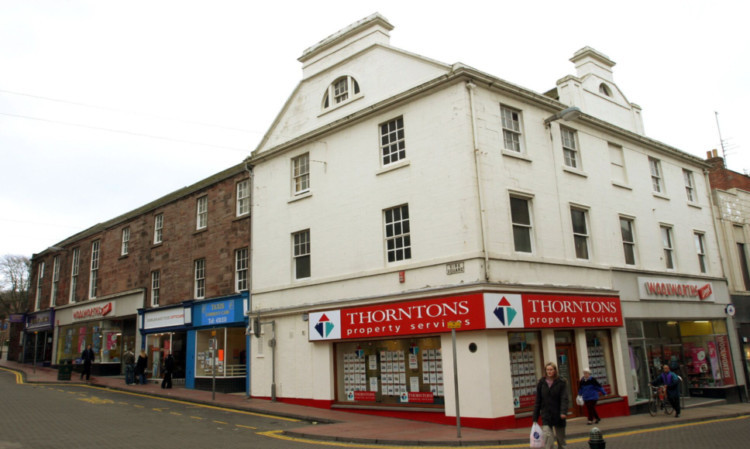Behind a display stand on the sales floor of the former Woolworths store, Arbroath, lies a door which opens up to 500 years of the town’s history.
Beyond it, as if suspended in time, is the old White Hart Hotel, where Sir Walter Scott drew inspiration for The Antiquary, and where Robert Burns ate breakfast.
Even Dr Samuel Johnson, his caustic pen and sidekick Boswell were guests there in 1773.
It was once at the very centre of commercial life in Arbroath.
Every stage coach travelling north or south stopped outside and the hotel acted as a post house.
The origins of the White Hart Hotel can be traced to the dissolution of the abbey, according to Peter D. Morton, who faithfully recorded the town’s history in the Arbroath Guide weekly newspaper just after the first world war.
There is an amusing passage in The Antiquary which describes the antics at Fairport Post Office when Mrs Mailsetter had to forcibly prevent local gossips opening private letters.
Mr Morton recorded the belief that it was while staying at the White Hart Hotel that Sir Walter witnessed these scenes and incorporated them in his novel.
The hotel has a history of at least 400 years.
Its origin was very likely in the aftermath of the dissolution of Arbroath Abbey.
Until that time, hotels or inns were not required as the abbey fathers dispensed hospitality. It was not unknown for kings or other visitors to stay for weeks on end with their huge entourages, dining at the expense of the abbey which raised revenue locally.
For many years, the White Hart Hotel was the property of the town authorities and the hotel was rebuilt in 1821.
In 1851 it passed from town council to private hands. In 1900, it underwent modernisation under proprietor Alexander Smith.
Surprisingly much of the hotel remains unchanged above and adjacent to the commerical premises it now houses.
The bright lights and shining glass of the sales area draws the eyes of pedestrians to the lower levels of the High Street building.
But cast an eye upwards and it is not hard to imagine a hotel operating there.
The grand windows of a ballroom can be seen above Terry Wood’s Abbey Music Shop and inside in what has became a storeroom for old stock, the vaulted ceilings of the ballroom can be seen.
Access to the main part of the old hotel is through a small trap door from the stock room and down a flight of stairs.
When I visited the premises some years ago, Woolworths staff told me they did not wander around there much. A ghost legend keeps them to the main stock area.
In rooms overlooking High Street, the wooden panelling leaves no doubt of the building’s past use as a hotel.
The building is on various levels and it is easy to become disorientated in the narrow passages and stairwells. Adjacent to the White Hart was its livery stables, an early form of taxi office and vehicle hire company. It is thought the stables were cleared when Montague Burton laid the foundation stone of his granitefronted tailor’s shop next door. While the White Hart was the hotel of choice for the business community there were others in the town centre including Royal George in Horners Wynd and the Tower Nook at 258 High Street, which later became a draper.
